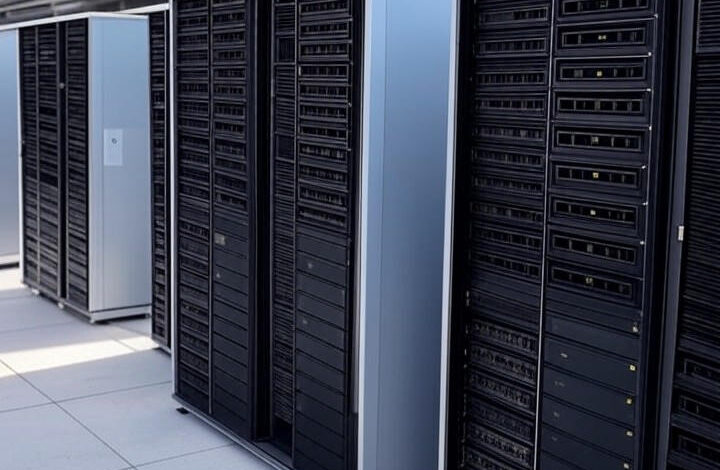AI’s 2025 Surge Faces Energy Crisis Threatening Progress

URGENT UPDATE: The rapid ascent of artificial intelligence in 2025 faces a critical challenge: a severe energy crisis that threatens to stall progress. Industry leaders, including venture capitalist Chamath Palihapitiya, are raising alarms about the immense energy demands of data centers powering AI models, warning that energy could become the ultimate gatekeeper for future advancements.
In a recent post on social media platform X, Palihapitiya emphasized that both software and hardware in AI require a radical rethinking of energy strategies. He advocates for a quest for “infinite and marginally costless energy” through diverse, rapidly deployable sources. With the staggering electricity needs of AI, highlighted by an International Energy Agency report from April, immediate solutions are in high demand.
As the need for data centers to support models like GPT-4 increases, current grid capacities are being pushed to their limits. Experts predict that without major adjustments, the electricity requirements for training large AI models could outstrip supply. Notably, traditional energy solutions such as nuclear power won’t scale before 2032, while natural gas and coal plants face multi-year backlogs for essential components.
To address these urgent energy requirements, Palihapitiya identifies solar paired with storage as the most viable short-term option, with deployment timelines of just 12 to 17 months. However, significant economic hurdles hinder the scaling of solar energy. Regulatory challenges surrounding Foreign Entity of Concern regulations complicate supply chains for critical materials like lithium-iron-phosphate, necessary for efficient energy storage systems.
Former Meta employee Rihard Jarc revealed on X that even tech giants are grappling with capital expenditure delays. Despite plans to invest between $100 billion and $150 billion in AI infrastructure, bottlenecks in transformers, power equipment, and cooling systems are preventing timely deployments. For instance, Schneider Electric, a major supplier, is booked solid until 2030, illustrating that financial resources alone cannot overcome these physical limitations.
As the industry pushes for innovation, experts stress the need to enhance data center efficiency. Palihapitiya suggests rethinking HVAC systems and introducing new heat pump technologies that boost efficiency while eliminating harmful chemicals. This innovation is vital as AI workloads, particularly inference tasks that may be up to 100 times larger than training, demand optimized chip performance and advanced memory architectures.
The implications extend beyond software advancements. Physical AI, which includes robotics and automation, also depends heavily on energy sources. The extraction of rare earth elements, essential for components like permanent magnets in motors, is energy-intensive and poses additional risks to progress. Palihapitiya stresses that the entire “recipe” for AI must adapt, from mining practices to production processes, to avoid further bottlenecks.
The urgency of these developments is underscored by a World Economic Forum article from July, which emphasizes that low-carbon energy solutions must grow alongside digital infrastructure. While AI holds potential as a tool for sustainability, there’s a risk that its expansion could inadvertently lead to increased emissions without careful oversight.
The United States, in particular, faces a critical disadvantage in electricity generation compared to global competitors like China. Palihapitiya has pointed out that regulatory backlogs on natural gas turbine installations and delays on over 35,000 permits are hampering new power additions, putting America’s leadership in AI innovation at risk. A report from Data Center Frontier reinforces this, indicating that grid capacity is becoming a more significant limiter than chip availability.
Despite these challenges, innovative solutions are emerging. Companies like Positron AI are developing energy-efficient hardware aimed at disrupting legacy GPU inefficiencies in a market projected to reach $253.75 billion by 2030. Additionally, the MIT Energy Initiative is advocating for an integrated approach, positioning AI as both a challenge and a solution for clean energy transitions.
Looking ahead, it is crucial for stakeholders to prioritize energy as a foundational element for AI’s future. This includes accelerating domestic supply chains for energy storage, investing in next-generation cooling technologies, and leveraging AI to improve energy efficiency. Deloitte’s TMT Predictions 2025 emphasizes that the future of AI hinges on sustainable tech adoption amid rapid data center growth. The stakes are high: if these energy challenges are not addressed, innovation may stagnate, while successful solutions could pave the way for unprecedented computational power.
Industry leaders are keenly aware that the coming years will determine whether AI can overcome this energy crisis or remain stymied by it. The clock is ticking, and the implications for technological advancement are profound.






